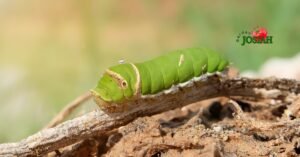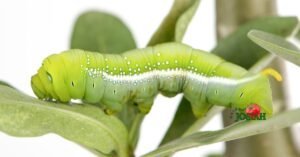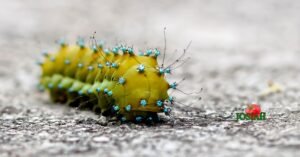Imagine a human baby growing to 18 tons by age 25. That’s how fast some caterpillars grow1. They are key to keeping ecosystems balanced, controlling plant growth, and feeding other animals1. But, their world is changing fast due to climate change.
Green caterpillars are more than just picky eaters1. They have special features like many eyes and hooks, and can even spin silk1. They also store plant chemicals, which they pass on to adults or even their offspring1.
Key Takeaways
- Caterpillars are voracious consumers that play a crucial role in maintaining the balance of ecosystems.
- Caterpillars possess remarkable adaptations, from multiple eyes to specialized breathing structures and the ability to spin silk.
- The intricate relationships between caterpillars, their host plants, and parasitoids are threatened by climate change.
- Preserving and understanding these tri-trophic interactions is essential for safeguarding the stability and function of ecosystems.
- Investing in research and conservation efforts focused on green caterpillars can have far-reaching benefits for biodiversity.

Introduction to Green Caterpillars and Their Ecological Significance
Caterpillars are the young stage of butterflies and moths. They are vital to ecosystems. As lepidoptera larvae, they feed many predators, playing a key role in the food chain dynamics. Some caterpillars eat up to 27,000 times their body weight in weeks, showing their big impact2.
Why Caterpillars Matter: Their Role in the Food Chain
Caterpillars eat a lot of plants, helping balance plant growth and controlling populations. They also help other insects by being food for them. This creates a strong herbivore-predator relationship and a complex tri-trophic interaction that keeps ecosystems healthy3.
The Remarkable Appetite of Caterpillars
Caterpillars’ big appetite shows their importance in plant-insect interactions. They eat a lot of plants, helping the food web grow. This balance is key for keeping ecosystems diverse and strong2.
| Caterpillar Species | Average Consumption Rate |
|---|---|
| Spodoptera frugiperda (Fall Armyworm) | Able to consume up to 27,000 times its body weight in a few weeks |
| Helicoverpa zea (Corn Earworm) | Capable of eating through an entire ear of corn in a single day |
| Pieris rapae (Cabbage White Butterfly) | Larvae can consume the entire leaf surface of a cabbage plant in a matter of days |

The Role of Green Caterpillars in Biodiversity: Why They Matter
Tri-Trophic Interactions: Plants, Caterpillars, and Parasitoids
Green caterpillars play a key role in keeping ecosystems balanced. They interact with plants and the parasitoids that eat them4. This complex web is vital for ecosystem health.
Native oak trees support over 500 caterpillar species, while exotic ginkgos host just 54. The variety of these interactions is crucial for ecosystem resilience and biodiversity conservation.
Climate Change and the Disruption of Delicate Ecosystems
But climate change threatens these delicate balances. Rising temperatures and CO2 levels disrupt the timing of plant and herbivore development5. This can lead to a decline in interaction diversity, affecting ecosystem stability5.
To fight climate change, using native plants in landscaping can help store CO2 and use less water than exotic plants4.
Understanding and preserving these ecosystem interactions is key to mitigating climate change’s effects5. By maintaining these balances, we can support ecosystem resilience and biodiversity54.
The U.S. lost 150 million acres to urban sprawl in the last century. Lawns and exotic plants cover over 40 million acres. Native oak trees support over 500 caterpillar species, while ginkgos host only 54.
It takes over 6,000 caterpillars to raise one brood of chickadees. The traditional suburban lawn uses 10 times more pesticides than farmland. Using native plants can help combat climate change by storing CO25.
Native plants need less water than exotic ones. Nearly 30,000 plant-caterpillar interactions were studied across three continents to understand lepidopteran biodiversity in temperate broadleaf forests5. Plant diversity positively correlates with caterpillar diversity in ecosystems.
Many caterpillars specialize in one or a few host plants, often within the same plant family. Ecosystems with diverse plant lineages tend to limit caterpillar host options. Invasive plants can harm biodiversity by presenting defenses that native caterpillars may not recognize as food.

Studying Green Caterpillars: Research Aims and Approaches
Scientists are studying green caterpillars to learn about their role in keeping ecosystems diverse and how climate change affects them6. They aim to gather data on how caterpillars, plants, and their enemies interact. They also want to see how climate change, like more extreme weather, impacts these interactions6.
Collecting Data on Interaction Diversity
Volunteers are key in this research, helping with field and lab work6. They find and identify caterpillars and their plants, and watch how they interact with parasites6. This work helps scientists keep these important relationships healthy, which is crucial for ecosystems6.
Experimental Studies on Climate Change Parameters
Researchers also do experiments to see how climate change affects caterpillar and plant interactions6. They change things like temperature and rain to see how it messes with these relationships6.
By using field data, lab experiments, and volunteer help, scientists are figuring out how green caterpillars keep ecosystems balanced6. Their findings will help protect these important parts of our world from climate change6.
The Role of Volunteers in Green Caterpillar Research
Volunteers are key in studying green caterpillars and their role in nature7. They help us learn about the complex links between plants, caterpillars, and their enemies. They also aid in finding ways to protect these ecosystems from climate change7.
Field Work: Collecting and Identifying Caterpillars and Plants
Volunteers learn to spot caterpillar signs and collect them with their host plants7. This hands-on work is crucial for gathering field data. It helps us understand green caterpillar populations and their environment7.
Laboratory Work: Rearing Caterpillars and Data Entry
In the lab, volunteers help care for caterpillars. They move them to new bags and record any changes7. They also enter data from the field and lab. This work is vital for accurate research and conservation7.
Volunteers are crucial in green caterpillar research7. Their help lets researchers study these insects more deeply. This leads to a better understanding of their importance in our ecosystems7.
| Volunteer Contribution | Impact |
|---|---|
| Field data collection | Provides essential information on caterpillar populations and their interactions with plants |
| Caterpillar rearing in the lab | Allows for detailed observation and study of caterpillar life cycles and behaviors |
| Data entry and management | Ensures the integrity and comprehensive nature of the research data |
“Volunteers are the lifeblood of our green caterpillar research program. Their dedication and attention to detail are invaluable in helping us uncover the secrets of these fascinating creatures and their role in maintaining biodiversity.”
–Dr. Emily Hartley, Lead Researcher, Caterpillar Biodiversity Project
Conclusion
Green caterpillars are key to keeping ecosystems balanced and strong8. They eat a lot, helping many animals survive8. But, their world is changing because of climate change9.
By learning about these caterpillars and their friends, we can help our planet8. We can keep our world healthy and full of life8.
Butterflies, including green caterpillars, show us if our environment is okay8. They help attract bees and birds, which is good for our world8. We must protect their homes to keep our ecosystems strong8 and adapt to climate change9.
As our climate changes, knowing about green caterpillars is crucial8. They are important in the food chain and tell us about the health of our planet8. We must protect them and the relationships they have in nature9.
FAQ
What is the role of green caterpillars in maintaining biodiversity?
Green caterpillars are key in the food chain. They feed many predators like birds and bats. Their big appetite helps control plant numbers and pests, keeping ecosystems balanced.
How do the interactions between green caterpillars, their host plants, and parasitoids contribute to ecosystem health?
The relationships between green caterpillars, their host plants, and parasitoids are vital. They help keep plant and herbivore numbers in check. This balance is crucial for ecosystem health.
How are the effects of climate change impacting the relationships between green caterpillars, their host plants, and parasitoids?
Climate change is changing the timing of plant and herbivore growth. This disrupts the signals between green caterpillars, their host plants, and parasitoids. Such disruptions can harm ecosystem stability.
What are the primary research aims in studying green caterpillars and their role in maintaining biodiversity?
The main goals are to study how plants, green caterpillars, and parasitoids interact. Researchers also aim to understand how climate change affects these interactions. This knowledge is key to keeping ecosystems healthy.
How can volunteers contribute to the research on green caterpillars and their importance for biodiversity?
Volunteers are vital in studying green caterpillars. They help with field and lab work. Their efforts help us understand these complex relationships and find ways to protect them from climate change.
Source Links
- Caterpillars – more than meets the eye
- Climate Change and Caterpillars Briefing
- A Conversation with Doug Tallamy and Sean B. Carroll
- Why Native Plants Matter
- Why Plant Relationships Matter for Caterpillars — In Defense of Plants
- Understanding and Fighting Processionary Caterpillars
- Why butterflies matter
- How butterflies benefit the environment
- Understanding and Fighting Processionary Caterpillars






